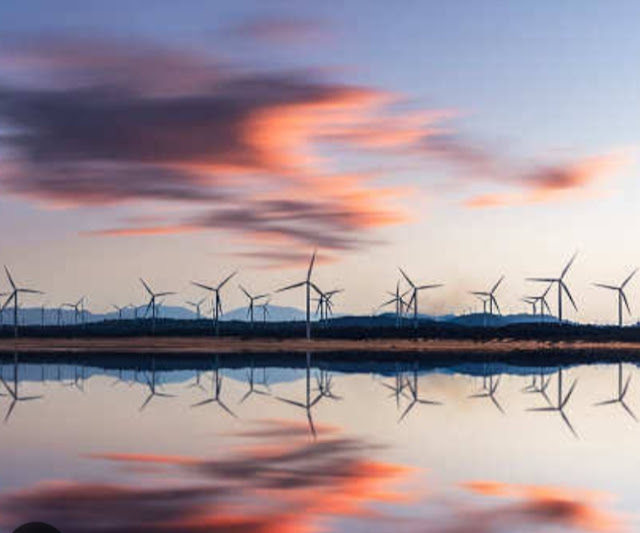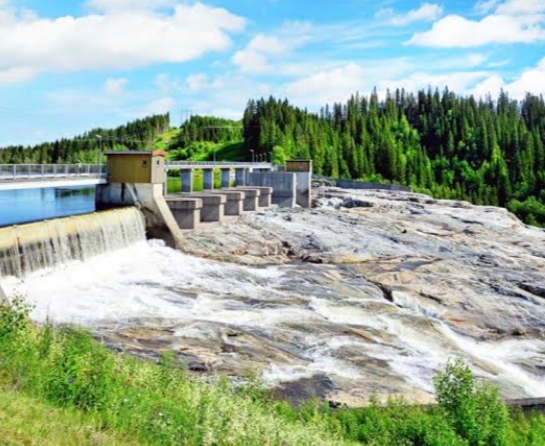Navigating the Fjords of Green Ambition: A Statistical Deep Dive into Norway’s Energy Landscape
Nestled amidst majestic fjords and snow-capped peaks, Norway presents a fascinating paradox.
The world’s seventh-largest exporter of natural gas, generating significant wealth from fossil fuels, it simultaneously leads the global renewable energy race, with over 98% of its electricity sourced from clean sources. This dichotomy forms the captivating backdrop of Norway’s energy landscape, a tapestry woven with ambition, innovation, and ongoing challenges.
Hydropower: The Hydroelectric Titan
The story of Norway’s green energy success begins with hydropower. Abundant rainfall and mountainous terrain make the country perfectly suited for harnessing water’s power. As of 2022, 90.4% of its electricity comes from hydroelectric dams, placing it as the seventh-largest global producer and the absolute European leader. These 1,500+ dams provide a clean, reliable source of energy, contributing significantly to Norway’s low greenhouse gas emissions, which stand at roughly 4.8 tonnes per capita annually, far below the global average of 7.5.
Norway’s green energy landscape showcases a successful pattern of adopting and integrating renewables, with ambitious targets and innovative solutions. However, complexities remain in balancing economic realities and environmental responsibilities. By addressing these challenges and continuing its innovative path, Norway can solidify its position as a global leader and inspiration for a sustainable energy future.
Hydropower: Diversifying the Renewable Portfolio
While hydropower remains the cornerstone, Norway is actively diversifying its green mix. Wind power is emerging as a key player, with an ambitious plan to reach 30GW of offshore wind capacity by 2040. This “Soria Moria 2” initiative, if successfully implemented, could potentially make Norway a European leader in per capita wind energy production. As of 2022, wind power contributes approximately 10% of the country’s electricity, with a capacity of 3.2 GW.
Solar energy, although currently playing a minor role with a 0.3% contribution in 2022, is witnessing steady growth, particularly in rooftop installations. Initiatives like the “Sol på tak”-program provide financial support for homeowners, aiming to increase solar PV capacity and foster energy independence.
Other renewable sources are also being explored. Bioenergy contributes around 7% of final energy consumption, primarily sourced from wood-based fuels. Wave power remains in its early stages but holds promise for future diversification. In 2022, the world’s first operational wave power station, the Utsira wave power plant, started generating electricity with a capacity of 0.8MW.
Innovation: Fueling the Green Engine
Norway’s commitment to green energy extends beyond individual technologies. The country is a hotbed for innovation, fostering research and development in areas like:
- Energy storage: With intermittent renewable sources like wind and solar, efficient storage solutions are crucial. Norway is actively involved in developing large-scale battery storage and exploring pumped hydro storage facilities.
- Smart grids: Integrating diverse renewable sources requires intelligent grid management systems. Norway is at the forefront of developing smart grid technologies that can optimize energy flow and balance supply and demand.
- Carbon capture and storage (CCS): Capturing and storing carbon emissions from industrial processes holds significant potential for mitigating climate change. Norway is heavily involved in CCS projects, including the world’s first full-scale CCS project, Longship, aiming to capture CO2 from industrial plants and permanently store it under the seabed.
Green Hydrogen: A Clean Fuel for the Future
Produced using renewable energy, green hydrogen is seen as a critical element in decarbonizing sectors like transportation and industry. Norway is actively involved in developing a hydrogen economy, with projects like the “Hywind Tampen” aiming to produce clean hydrogen from offshore wind farms. This project, upon completion, could become the world’s largest green hydrogen production facility.
Challenges and the Road Ahead
Despite its achievements, Norway’s green energy transition faces challenges:
- Balancing fossil fuels and renewables: Balancing ambitious green goals with the economic realities of its fossil fuel industry remains a delicate dance. Oil and gas still account for a significant portion of the country’s GDP and exports.
- Environmental impact of hydropower: While clean, large-scale hydropower projects can have environmental impacts on ecosystems and local communities. Careful planning and mitigation strategies are crucial.
- Grid integration and infrastructure: Integrating a diverse mix of renewable sources into the grid requires robust infrastructure and efficient management systems. Continuous investment and development are essential.
Patterns of Green Energy Adoption in Norway: A Closer Look
Examining the green energy landscape in Norway reveals fascinating patterns:
Dominant Hydropower:
- Over 90% of electricity comes from hydropower, making Norway the 7th largest global producer and the European leader.
- This established technology provides a clean and reliable baseload but raises concerns about environmental impact on sensitive ecosystems.
Emerging Wind Power:
- Rapid growth in offshore wind, with a target of 30GW capacity by 2040 under “Soria Moria 2”.
- Has the potential to make Norway a per capita wind leader in Europe.
- Integration with the grid and potential visual impact require careful planning.
Gradual Solar Rise:
- Solar energy currently plays a minor role (0.3% contribution) but witnesses steady growth in rooftop installations.
- Government incentives like “Sol på tak” contribute to increasing solar PV capacity and energy independence.
- Geographical limitations and weather conditions influence its further expansion.
Diversification Efforts:
- Bioenergy contributes 7% of final energy consumption, mainly from wood-based fuels.
- Wave power is in its early stages, represented by the pioneering Utsira wave power plant (0.8MW).
- Exploration of other renewables like geothermal and tidal energy holds future potential.
Innovation Focus:
- Strong emphasis on research and development in energy storage, smart grids, and carbon capture & storage (CCS).
- Projects like large-scale battery storage and the world’s first full-scale CCS project, Longship, showcase commitment to innovation.
- Green hydrogen development through projects like “Hywind Tampen” aims to decarbonize transport and industry.
Challenges and Responses:
- Balancing fossil fuels and renewables: Norway navigates the complexities of transitioning away from oil and gas, a significant economic contributor.
- Environmental considerations: Mitigating the impact of hydropower projects and exploring sustainable alternatives are crucial.
- Grid infrastructure and integration: Continuous investment and development are needed to manage a diverse and growing renewable mix.
Overall Pattern:
- Norway displays a clear pattern of prioritizing renewable energy, primarily driven by hydropower and increasingly supplemented by wind power.
- A gradual diversification towards solar, bioenergy, and emerging technologies is evident.
- Strong focus on innovation and addressing challenges like grid integration and environmental impact characterizes the approach.
Table of Green Energy Patterns in Norway
| Pattern | Description | Data/Example | Challenges |
|---|---|---|---|
| Dominant Hydropower | Over 90% of electricity generation relies on hydropower. | – 7th largest global producer, European leader. – 1,500+ dams provide clean and reliable baseload. | – Environmental impact on ecosystems and local communities. |
| Emerging Wind Power | Rapid growth in offshore wind, aiming for 30GW capacity by 2040. | – “Soria Moria 2” initiative targets Europe’s per capita wind leadership. | – Grid integration and potential visual impact require planning. |
| Gradual Solar Rise | Solar energy plays a minor role but witnesses steady growth in rooftop installations. | – 0.3% contribution, but “Sol på tak” program accelerates expansion. | – Geographical limitations and weather conditions influence growth. |
| Diversification Efforts | Exploration of diverse renewables beyond established technologies. | – Bioenergy contributes 7% of final energy consumption. – Wave power represented by Utsira plant (0.8MW). – Geothermal and tidal energy hold future potential. | – Technological maturity and economic viability vary across these sources. |
| Innovation Focus | Strong commitment to research and development in key areas. | – Projects like large-scale battery storage and full-scale CCS (Longship). – Green hydrogen development through “Hywind Tampen” for decarbonization. | – Continuous investment and collaboration needed to keep pace with advancements. |
| Balancing Act | Navigating the transition away from economically significant fossil fuels. | – Oil and gas still contribute a significant portion of GDP and exports. | – Careful planning and diversification strategies are essential for a smooth transition. |
| Environmental Considerations | Addressing the environmental impact of energy production and infrastructure. | – Mitigating hydropower impact and exploring sustainable alternatives are crucial. | – Balancing energy needs with environmental protection requires ongoing assessment and adaptation. |
| Grid Infrastructure | Continuous development and investment needed for diverse and growing renewable mix. | – Upgrading and expanding grid capacity to manage fluctuating supply and demand. | – Collaboration between government, industry, and academia is crucial for efficient infrastructure development. |
Statistics Data of Green Energy in Norway (as of 2023 or latest available)
Electricity Generation:
- Total: 155.7 TWh (2021)
- Share of Renewables: 98.2% (2021)
- Hydropower: 90.4% (2022)
- Wind Power: 10.0% (2022)
- Solar Power: 0.3% (2022)
- Bioenergy: N/A (data on electricity generation not readily available)
Installed Capacity:
- Hydropower: 32.2 GW (2022)
- Wind Power: 3.2 GW (onshore), 0.6 GW (offshore) (2022)
- Solar Power: 321 MW (2022)
Government Goals:
- Wind Power: 30 GW offshore capacity by 2040
Additional Data:
- Greenhouse Gas Emissions: 4.8 tonnes per capita (2020)
- Renewable Energy Consumption (% of total final energy consumption): 80.1% (2020)
- Number of Electric Vehicles: 261,951 (as of December 31, 2022)
Green Energy Statistics in Norway (2023 or Latest Available)
| Category | Statistic | Data | Source |
|---|---|---|---|
| Electricity Generation | Total | 155.7 TWh | SSB, 2021 |
| Share of Renewables | 98.2% | SSB, 2021 | |
| Hydropower | 90.4% | NVE, 2022 | |
| Wind Power | 10.0% | NVE, 2022 | |
| Solar Power | 0.3% | NVE, 2022 | |
| Bioenergy (electricity) | N/A | N/A | |
| Installed Capacity | Hydropower | 32.2 GW | NVE, 2022 |
| Wind Power (onshore) | 3.2 GW | NVE, 2022 | |
| Wind Power (offshore) | 0.6 GW | NVE, 2022 | |
| Solar Power | 321 MW | NVE, 2022 | |
| Government Goals | Wind Power (offshore) | 30 GW by 2040 | Norwegian Government |
| Additional Data | Greenhouse Gas Emissions (per capita) | 4.8 tonnes | Zero Emission Resource Organisation, 2020 |
| Renewable Energy Consumption (% of total) | 80.1% | IRENA, 2020 | |
| Electric Vehicles | 261,951 | Zero Emission Resource Organisation, Dec 2022 |
Notes:
- This table presents a selection of key statistics on green energy in Norway.
- Data for some categories may not be readily available or comparable across sources.
Sources:
- Norway – IRENA: https://www.irena.org/irenadocuments/statistical_profiles/europe/norway_europe_re_sp.pdf
- Renewable Energy – Norway | Statista: https://www.statista.com/outlook/io/energy/renewable-energy/norway
- SSB: National statistics: https://www.ssb.no/en/statbank/
- NVE: Norwegian Water Resources and Energy Directorate: https://www.nve.no/en/
- Zero Emission Resource Organisation: https://zeroemission.no/
Conclusion: A Beacon of Green Inspiration?
Norway’s energy landscape presents a complex and evolving picture. While navigating the contradictions between its fossil fuel past and its green ambitions, the country is undoubtedly a leader in renewable energy solutions.
Its success story offers valuable lessons for other nations embarking on similar journeys. By continuously innovating, addressing challenges head-on, and fostering international cooperation, Norway can solidify its position as a beacon of inspiration for a sustainable energy.
Norway’s green energy landscape showcases a successful pattern of adopting and integrating renewables, with ambitious targets and innovative solutions. However, complexities remain in balancing economic realities and environmental responsibilities. By addressing these challenges and continuing its innovative path, Norway can solidify its position as a global leader and inspiration for a sustainable energy future.
https://www.exaputra.com/2024/02/norways-green-energy-landscape.html
Renewable Energy
ICE Officers Do Not Have “Federal Immunity” for Their Crimes
 Stephen Miller on Fox threatens to arrest JB Pritzker for “seditious conspiracy” and says, “to all ICE officers: you have federal immunity in the conduct of your duties. And anybody who lays a hand on you or tries to stop or obstruct you is committing a felony.”
Stephen Miller on Fox threatens to arrest JB Pritzker for “seditious conspiracy” and says, “to all ICE officers: you have federal immunity in the conduct of your duties. And anybody who lays a hand on you or tries to stop or obstruct you is committing a felony.”
I have to laugh about this, because of Miller’s use of the phrase “federal immunity.” If you believe that for a second, I suggest you ask Derek Chauvin how he’s enjoying life. He’s serving a 22.5-year state sentence for murdering George Floyd and a 21-year federal sentence for violating his civil rights.
If I were advising the governor of any of the Democrat-run states to which Trump wants to send federal troops, I would have him tell his people that, not only is the will of the people on our side but so is the law. In fact, posse comitatus is among the most clearly written and important laws that govern our lives as U.S. citizens.
Further, if I would re-emphasize what a citizen should do if he sees an ICE officer clearly using excessive force.
ICE Officers Do Not Have “Federal Immunity” for Their Crimes
Renewable Energy
Should Government Be “Run Like a Business?”
 We all remember the Tea Party folks and all those related American voters who said, “Government should be run like a business.” Admittedly, this has a certain appeal. Until you think about it, that is.
We all remember the Tea Party folks and all those related American voters who said, “Government should be run like a business.” Admittedly, this has a certain appeal. Until you think about it, that is.
It’s worth going back to what the Founding Fathers had to say about the purpose of government. Here’s what Thomas Jefferson on the subject: (Government exists) to secure the rights of the people, such as life, liberty, and property, and to prevent tyranny.
The financial aspects of government were of importance over the years, but the concept of profit-making didn’t appear on anyone’s list until the late 20th Century.
Having said this, let’s agree that government should make certain “investments” in the well-being of its people, and education may be chief among these.
No one expects U.S. educational standards to make quantum leaps each year, but we as a nation would be well-served if our children were seen as important “investment opportunities” in our country’s long-term future.
Renewable Energy
RFK, Jr. — A Menace of Planetary Magnitude
If it weren’t for the extreme danger he represents to everyone on this planet, RFK, Jr. would be a fairly good joke.
The idea that the president of the United States would appoint a first-class crackpot with dozens upon dozens of gross and deeply felt misconceptions concerning science to be in charge of Americans’ health is just amazing.
It would have taken the average citizen literally months of research to find someone so manifestly unqualified for the position.
-
Climate Change2 years ago
Spanish-language misinformation on renewable energy spreads online, report shows
-
Climate Change3 months ago
Guest post: Why China is still building new coal – and when it might stop
-
Climate Change Videos2 years ago
The toxic gas flares fuelling Nigeria’s climate change – BBC News
-

 Greenhouse Gases1 year ago
Greenhouse Gases1 year ago嘉宾来稿:满足中国增长的用电需求 光伏加储能“比新建煤电更实惠”
-
Greenhouse Gases3 months ago
Guest post: Why China is still building new coal – and when it might stop
-

 Climate Change1 year ago
Climate Change1 year ago嘉宾来稿:满足中国增长的用电需求 光伏加储能“比新建煤电更实惠”
-

 Carbon Footprint2 years ago
Carbon Footprint2 years agoUS SEC’s Climate Disclosure Rules Spur Renewed Interest in Carbon Credits
-
Renewable Energy3 months ago
US Grid Strain, Possible Allete Sale

















